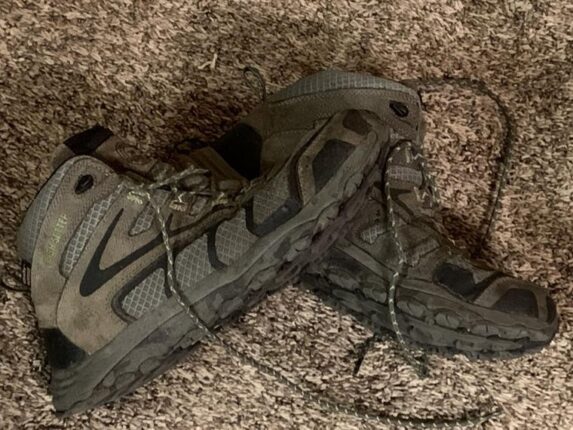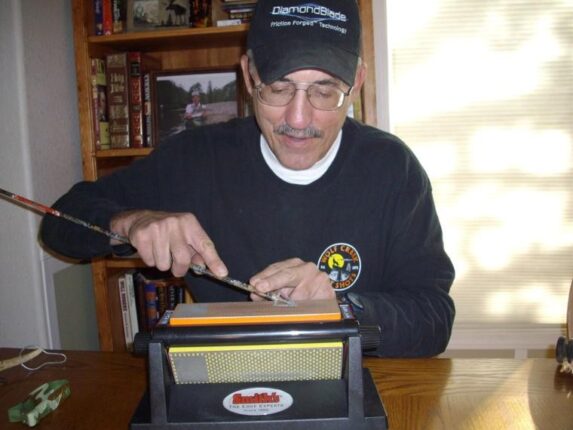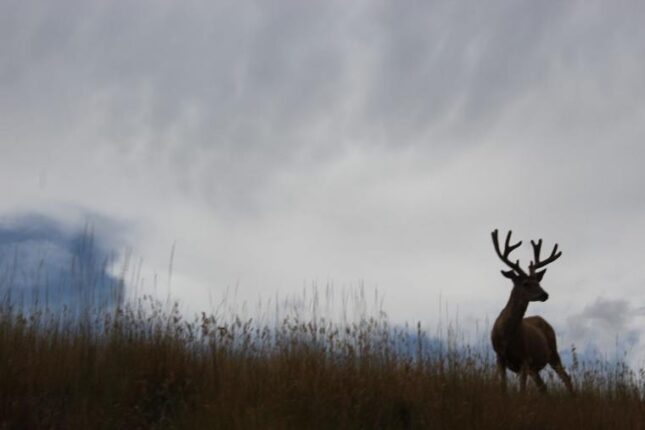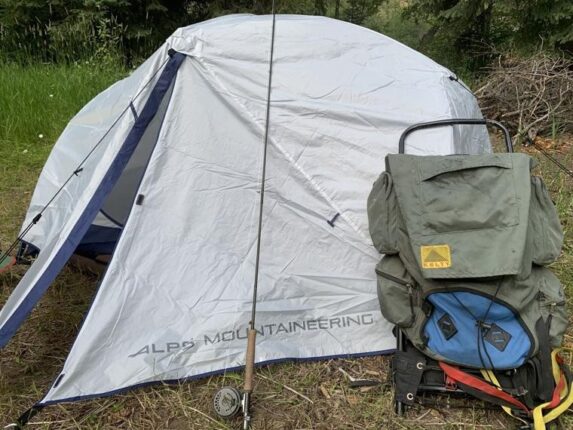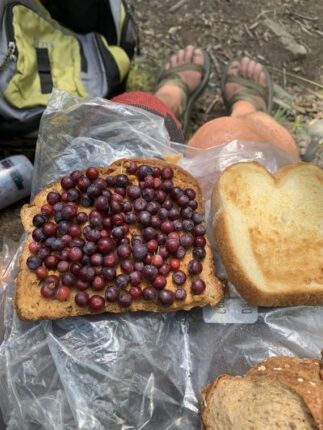You hear about women who buy a different pair of shoes every time they get a different outfit. I’ve got buddies whose wives’ closets are full of shoes. Us guys may all roll our eye in disbelief and count our blessings that our wives aren’t like that — but are we outdoorsmen really any different?
I know that this article is going to start a range war and all of the men in the reading public will call me a traitor and tar and feather me. But think about all of the boots that we really believe we can’t live without.
I need Chaco sandals for when I’m unloading the boat and in the boat fishing. I also use them when backpacking and fly fishing so I can wade out into a river, fish and then jump out and hike down the trail and be dried off before I get to the next hole. Then for fishing we actually need some slip-resistant deck shoes don’t we?
And if we’re wearing waders then we need wading boots, right? And felt bottom soles are outlawed in Alaska because you can transport invasive species of bugs or something? So you may have wading boots that have multiple bottoms that you can detach.
Then my buddy up in Alaska wears calf-high rubber boots because of all of the rain/bogs that they hunt in up there. She came to Idaho elk hunting and had a heck of a time scrambling around the mountains in her rubber boots. (But she did get a huge bull).
Then what about cowboy boots? You need cowboy boots to ride horses. Yes, I pack back into the mountains wearing hiking boots, but deep down I’m always worried that if I get thrown that I may hang a boot in the stirrup and get dragged due to the heavy lugs on the sole. Oh yeah, at last count I have seven to nine pairs of cowboy boots.
What if you’re hunting in a snake-infested area? Then we know that we need to wear snake boots. I know the yuppie trend is to sing praises about not killing venomous snakes, but I hate snakes. When I was a kid, a copperhead bit my dog. Since then, I’ve had no use for poisonous snakes. So if you’re hunting in snake country, you can justify wearing snake boots.
And then what about hiking? You have to have a pair of lightweight, canvas-sided hiking boots, don’t you? But what about hunting in colder weather? You’ll need some leather hiking boots. Leather ones are warmer/more waterproof in light snows and rains and cooler weather.
BUT what about hunting in deep snow in subzero weather? You’ve got to have heavy-duty leather high-top boots. Otherwise in deep snow it will come over the tops while hiking and pack into your boots.
Curse of all curses. So then we also have to have gaiters to strap on.
Oh, but what about ice fishing? Not only is it ungoshly cold, we’re also standing on a block of ice. So some Sorel Pac boots are nice aren’t they? Nothing is more miserable than having ice cold feet.
Since we’re on a roll, I might as well slam a few more nails in the coffin! A lot of us work for companies or in environments that require steel toe boots. And it is best not to wear the same pair of boots 12 hours a day, six days a week. My dad always said it is best to have two pairs and alternate every day wearing them and they’ll last a lot longer.
I can only pray that my wife doesn’t read this article and finally put two and two together and figure out how many pairs of boots that I actually own. What are you laughing at? You’d better get to praying, too! get prepared for the upcoming firestorm!
Sidenote: If you’re smart enough to hide this column so your wife doesn’t see it, then here are a few words of advice. For your deer/elk hunts this fall, buy a good pair of hiking boots. I’ve had good luck with Irish Setter VaprTrek boots. They’re lightweight. For heavy-duty snow, I like the leather Irish Setter Elk Hunting boots.
One thing that I now swear by — a good pair of hiking socks. I don’t want to exaggerate and say that it will be like walking on carpet, but it almost is. When you go to buy boots, wear the thicker hiking socks; otherwise if you buy boots while wearing a thin pair of socks then they will be too small and cramp your toes while out hiking hard. I’d rather have my boots a hair big rather than small.
Tom Claycomb lives in Idaho and has outdoors columns in newspapers in Alaska, Idaho, Utah, Nevada, Colorado and Louisiana. He also writes for various outdoors magazines and teaches outdoors seminars at stores like Cabela’s, Sportsman’s Warehouse and Bass Pro Shop.
